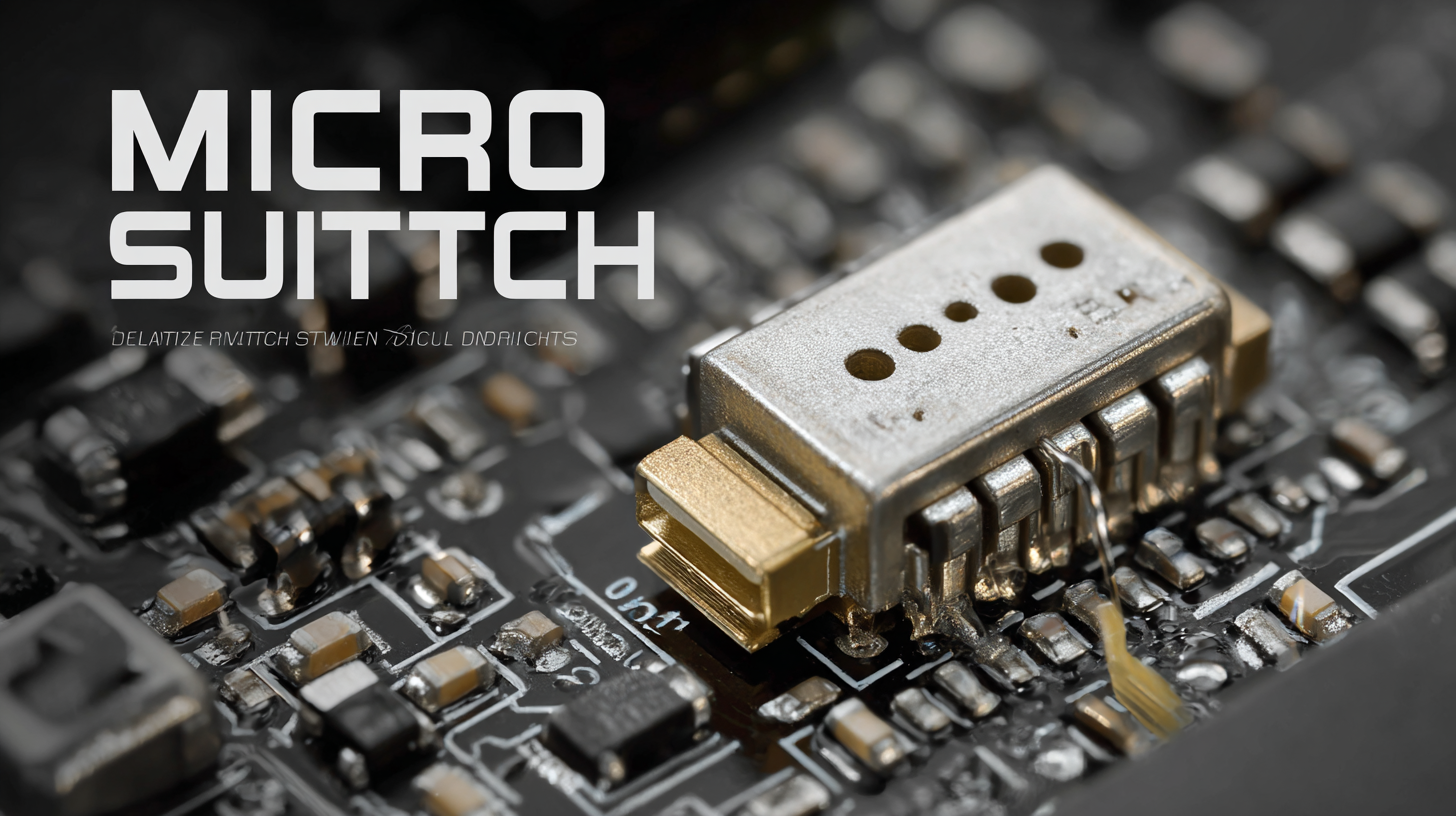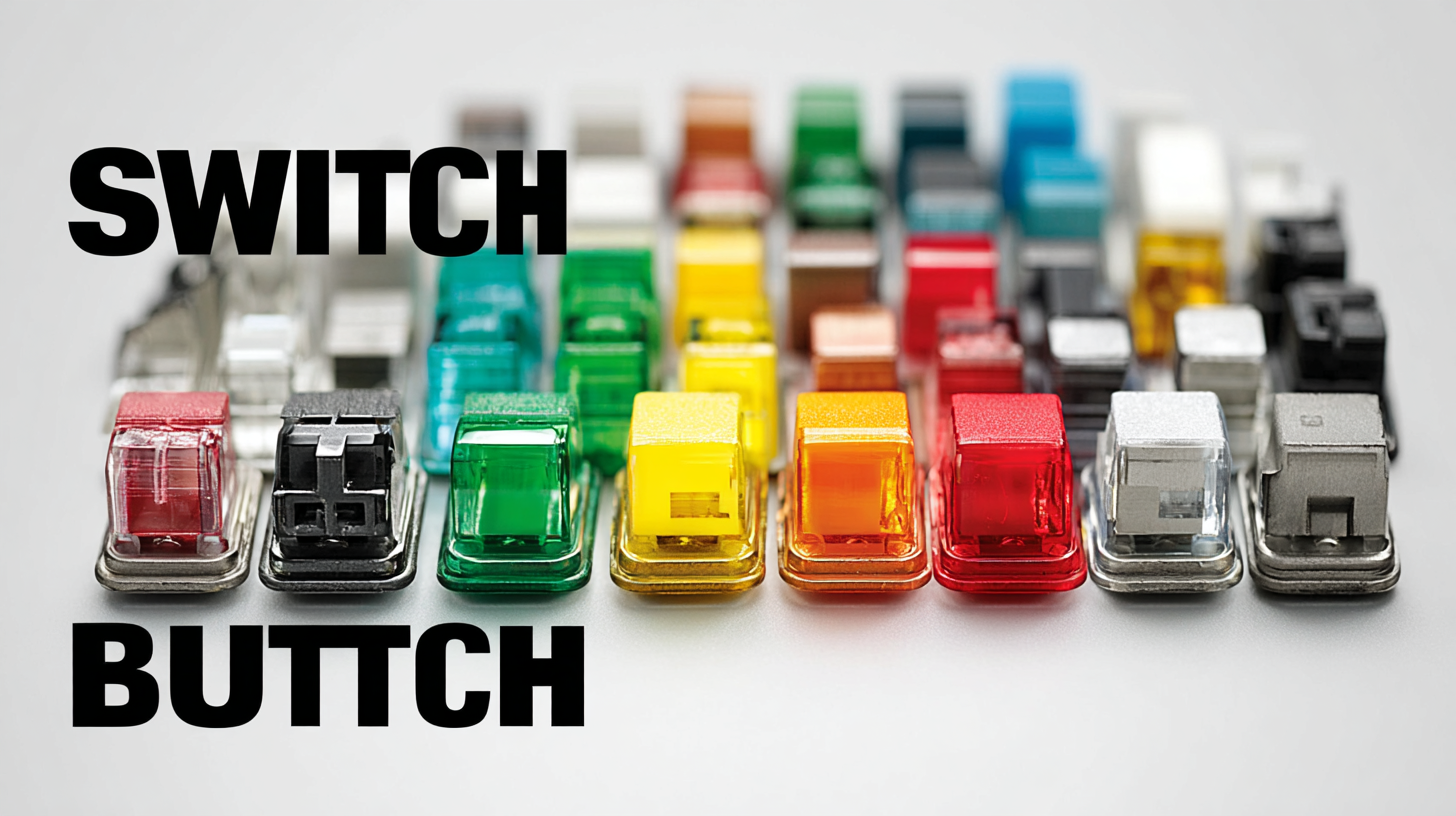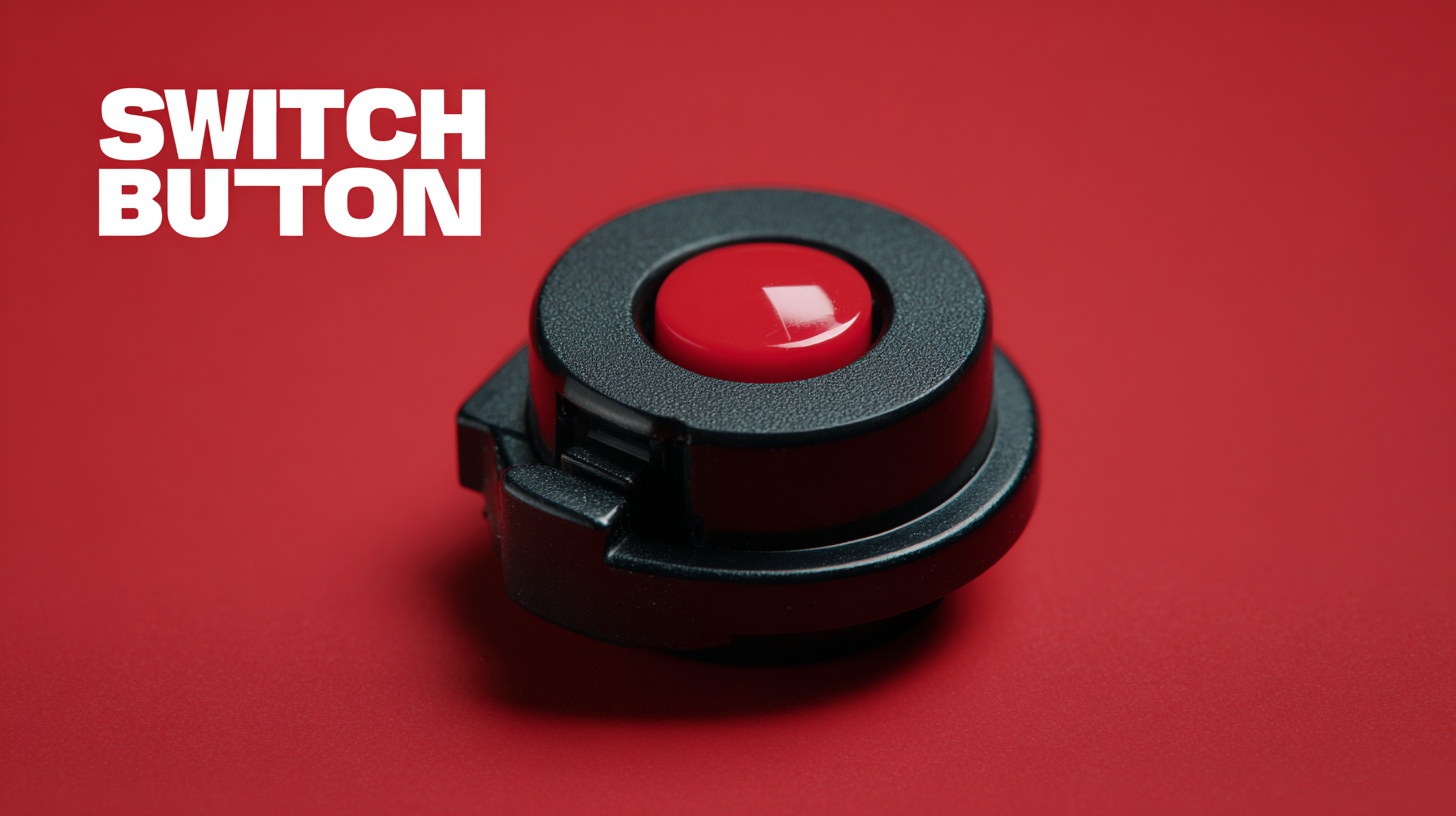Ultimate Guide to Selecting the Best Micro Switch Button for Global Manufacturing Success
In today's rapidly evolving manufacturing landscape, the choice of components can significantly influence efficiency and success. Among these pivotal components, the Micro Switch Button stands out as a critical element in numerous applications across various industries. This comprehensive guide aims to explore the different types of Micro Switch Buttons available in the market, detailing their unique characteristics and applicable ranges to help manufacturers make informed decisions. From tactile feedback mechanisms in electronic devices to safety interlocks in machinery, understanding which micro switch suits your specific needs can enhance product reliability and performance. Additionally, we will delve into practical "how-to" approaches for selecting the right switch, including important factors to consider and tips for integration, ensuring that your manufacturing process attains optimal functionality and success.

Key Industry Applications of Micro Switches in Manufacturing
Micro switches are essential components in various manufacturing sectors, serving as critical interfaces between operators and machinery. In industries like automotive manufacturing, micro switches ensure the precise operation of assembly lines by enabling automated processes. For example, they can detect the position of components, allowing for timely adjustments and preventing errors that could lead to costly production delays. Their compact design and reliability make them ideal for use in environments where space is limited and performance must be consistent.
In the food and beverage industry, micro switches play a vital role in maintaining standards of safety and hygiene. They are employed in packaging machines to ensure that lids close securely and that packaging aligns accurately, preventing contamination. Additionally, micro switches are used in conveyor systems to monitor the flow of materials, ensuring that processes remain uninterrupted and efficient. By integrating these switches into manufacturing equipment, companies can enhance their operational efficacy while meeting stringent industry regulations.

Exploring the Role of Micro Switches in Automation Systems
Micro switches are essential components in automation systems, playing a critical role in the reliability and efficiency of machinery. These tiny yet powerful switches act as a trigger mechanism, enabling operators to control circuits with precision. Their versatility makes them widely used in various applications, from industrial automation to consumer electronics. Understanding the nuances of micro switches can significantly enhance manufacturing processes and overall system performance.
Tip: When selecting a micro switch, consider the actuator type that best fits your application. Options such as roller levers or button actuators can greatly influence operational efficiency. Moreover, ensure compatibility with the control systems in use to avoid unexpected malfunctions.
Another important aspect to consider is the switch's specifications, including current capacity, voltage rating, and environmental tolerance. Choosing switches that can withstand the specific conditions of your manufacturing environment, such as humidity or temperature extremes, is crucial for maintaining system integrity.
Tip: Prioritize switches with a proven track record in your industry. Researching feedback from similar applications can provide insights into durability and performance, ultimately driving your manufacturing success.

Case Studies: Micro Switch Implementation in Various Sectors
In the rapidly evolving landscape of global manufacturing, micro switch buttons have emerged as vital components across various sectors. Their implementation not only enhances operational efficiency but also supports sustainability initiatives. For instance, in renewable energy projects, such as hybrid systems utilizing both solar and wind technologies, micro switches play a critical role in monitoring and controlling energy flow. By facilitating real-time responses to changes in energy generation, these components ensure seamless integration and optimal performance of renewable energy systems.
Case studies reveal the diverse applications of micro switches in sectors ranging from automotive to aerospace. In automotive manufacturing, these buttons are essential for safety features, like seatbelt reminders and airbag deployment systems. In aerospace, they are used to ensure aircraft systems function reliably under varying conditions. The successful integration of micro switches across these industries demonstrates their adaptability and underscores the importance of selecting the right components for specific applications.
As manufacturers continue to seek innovative solutions, understanding the implications of micro switch technology will be crucial for maintaining a competitive edge in a global market increasingly focused on sustainability and efficiency.
Advantages of Using the Right Micro Switch for Industry Success
Selecting the right micro switch button is crucial for ensuring optimal operational efficiency in global manufacturing. The advantages of utilizing the appropriate micro switch extend beyond mere functionality; they significantly enhance the overall performance and reliability of machinery. With the right choice, manufacturers can reduce downtime, improve safety, and ensure precision in their operations.
When choosing a micro switch, consider the environmental conditions it will face. Factors such as temperature, humidity, and potential exposure to contaminants can greatly impact the switch's performance. Tips for selecting the right micro switch include assessing the switch's specifications to ensure it can withstand the specific conditions of your manufacturing environment, and ensuring that it is compatible with the existing systems.
Another important factor is the switch's actuation force and travel distance. These elements can affect how responsive your machinery will be. It is advisable to test various models in real-world scenarios to find the optimal combination of sensitivity and durability. Remember to keep in mind the frequency of use; choosing a switch designed for high cycles can enhance longevity and reduce replacement costs over time.
Future Trends in Micro Switch Technology for Global Manufacturing
As the landscape of global manufacturing continues to evolve, staying ahead of trends in micro switch technology is paramount for businesses aiming to enhance their operational efficiency. One notable trend is the integration of smart technology into micro switches. These advanced switches can provide real-time feedback and diagnostics, enabling manufacturers to streamline their processes and reduce downtime. Implementing smart micro switch solutions can significantly improve both maintenance schedules and overall productivity.
Tip: Consider investing in micro switches with built-in diagnostics to enhance your maintenance strategies. This can prevent costly downtime and extend the lifecycle of your manufacturing equipment.
Another emerging trend is the increased focus on environmentally friendly materials and practices in switch manufacturing. As regulations tighten and sustainability becomes a priority, choosing micro switches made from recyclable materials can enhance a company’s green credentials. Furthermore, energy-efficient designs reduce power consumption, helping companies not only meet environmental standards but also cut operational costs.
Tip: Research suppliers who prioritize sustainability in their micro switch products, as this can align your manufacturing practices with global sustainability goals and improve your corporate image.
Ultimate Guide to Selecting the Best Micro Switch Button for Global Manufacturing Success - Future Trends in Micro Switch Technology
| Feature | Description | Trend Impact | Future Outlook |
|---|---|---|---|
| Actuation Force | The amount of force required to activate the switch. | Influences design ergonomics and product usability. | Increased focus on low-force actuation to improve user experience. |
| Durability | Refers to the lifespan and reliability of the switch under stress. | Essential for reducing maintenance costs and improving product longevity. | Emerging materials and designs aim for extended durability. |
| Size and Form Factor | The dimensions and shape of the micro switch. | Larger impact on compact device design and integration. | Miniaturization trends driving demand for smaller switches. |
| Environmental Resistance | The ability to withstand harsh environmental conditions. | Critical for applications in extreme conditions, impacting product reliability. | Growing focus on waterproof and dustproof designs for outdoor applications. |
| Switch Type | Includes types such as toggles, pushes, or slide switches. | Different types serve specific functions affecting usability. | Increasing automation may favor certain switch types over others. |

